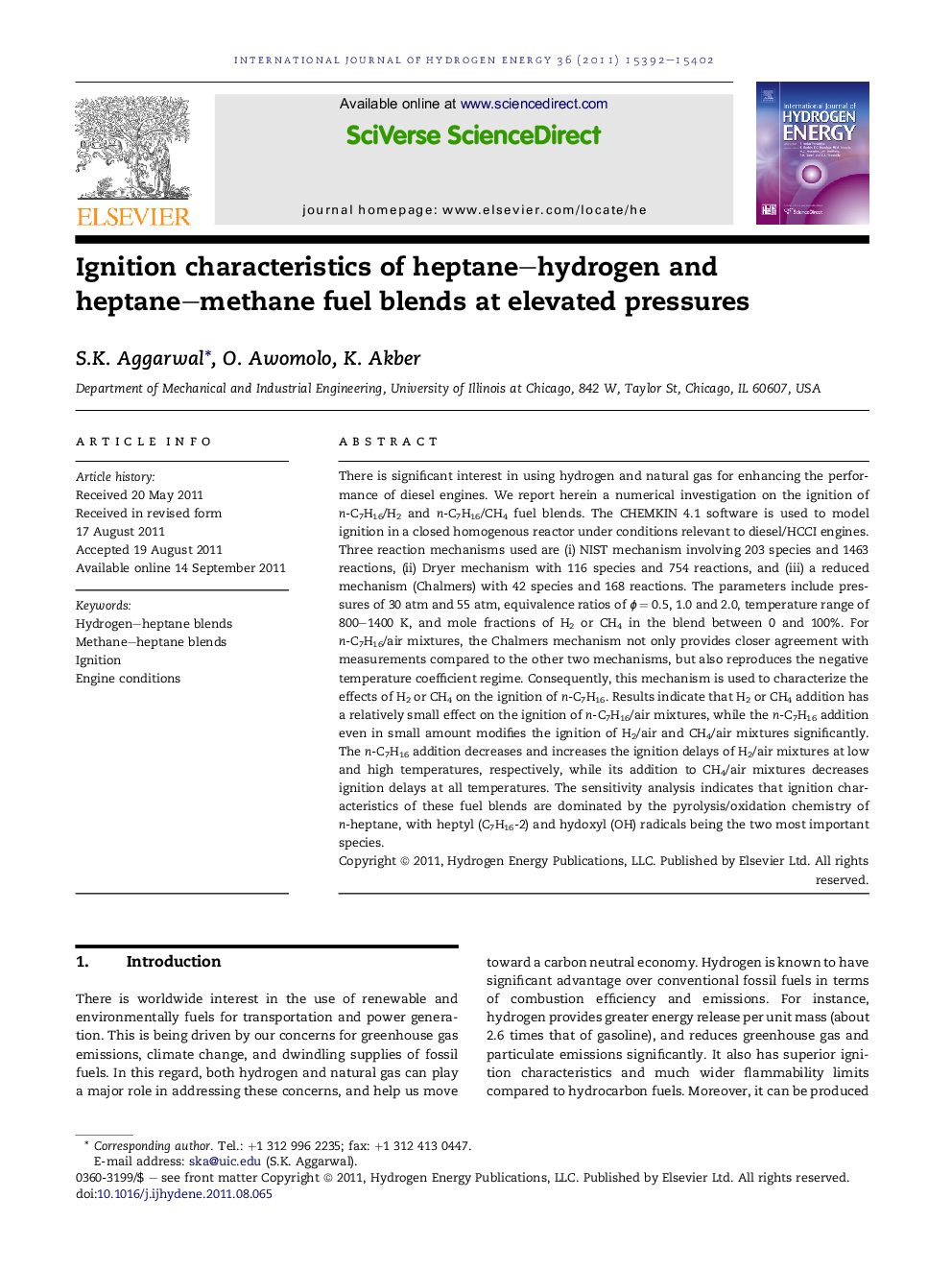| کد مقاله | کد نشریه | سال انتشار | مقاله انگلیسی | نسخه تمام متن |
|---|---|---|---|---|
| 1271833 | 1497570 | 2011 | 11 صفحه PDF | دانلود رایگان |

There is significant interest in using hydrogen and natural gas for enhancing the performance of diesel engines. We report herein a numerical investigation on the ignition of n-C7H16/H2 and n-C7H16/CH4 fuel blends. The CHEMKIN 4.1 software is used to model ignition in a closed homogenous reactor under conditions relevant to diesel/HCCI engines. Three reaction mechanisms used are (i) NIST mechanism involving 203 species and 1463 reactions, (ii) Dryer mechanism with 116 species and 754 reactions, and (iii) a reduced mechanism (Chalmers) with 42 species and 168 reactions. The parameters include pressures of 30 atm and 55 atm, equivalence ratios of ɸ = 0.5, 1.0 and 2.0, temperature range of 800–1400 K, and mole fractions of H2 or CH4 in the blend between 0 and 100%. For n-C7H16/air mixtures, the Chalmers mechanism not only provides closer agreement with measurements compared to the other two mechanisms, but also reproduces the negative temperature coefficient regime. Consequently, this mechanism is used to characterize the effects of H2 or CH4 on the ignition of n-C7H16. Results indicate that H2 or CH4 addition has a relatively small effect on the ignition of n-C7H16/air mixtures, while the n-C7H16 addition even in small amount modifies the ignition of H2/air and CH4/air mixtures significantly. The n-C7H16 addition decreases and increases the ignition delays of H2/air mixtures at low and high temperatures, respectively, while its addition to CH4/air mixtures decreases ignition delays at all temperatures. The sensitivity analysis indicates that ignition characteristics of these fuel blends are dominated by the pyrolysis/oxidation chemistry of n-heptane, with heptyl (C7H16-2) and hydoxyl (OH) radicals being the two most important species.
► A computational study on the ignition of hydrogen–heptane and methane–heptane blends at engine conditions.
► A detailed mechanism fully validated against n-heptane, methane, and hydrogen ignition data at high pressures.
► Addition of hydrogen or methane has a relatively small effect on the ignition of n-heptane.
► Addition of n-heptane has a significant effect on the ignition of hydrogen or methane.
► Sensitivity study performed to identify important reactions and species for the ignition of fuel blends.
Journal: International Journal of Hydrogen Energy - Volume 36, Issue 23, November 2011, Pages 15392–15402